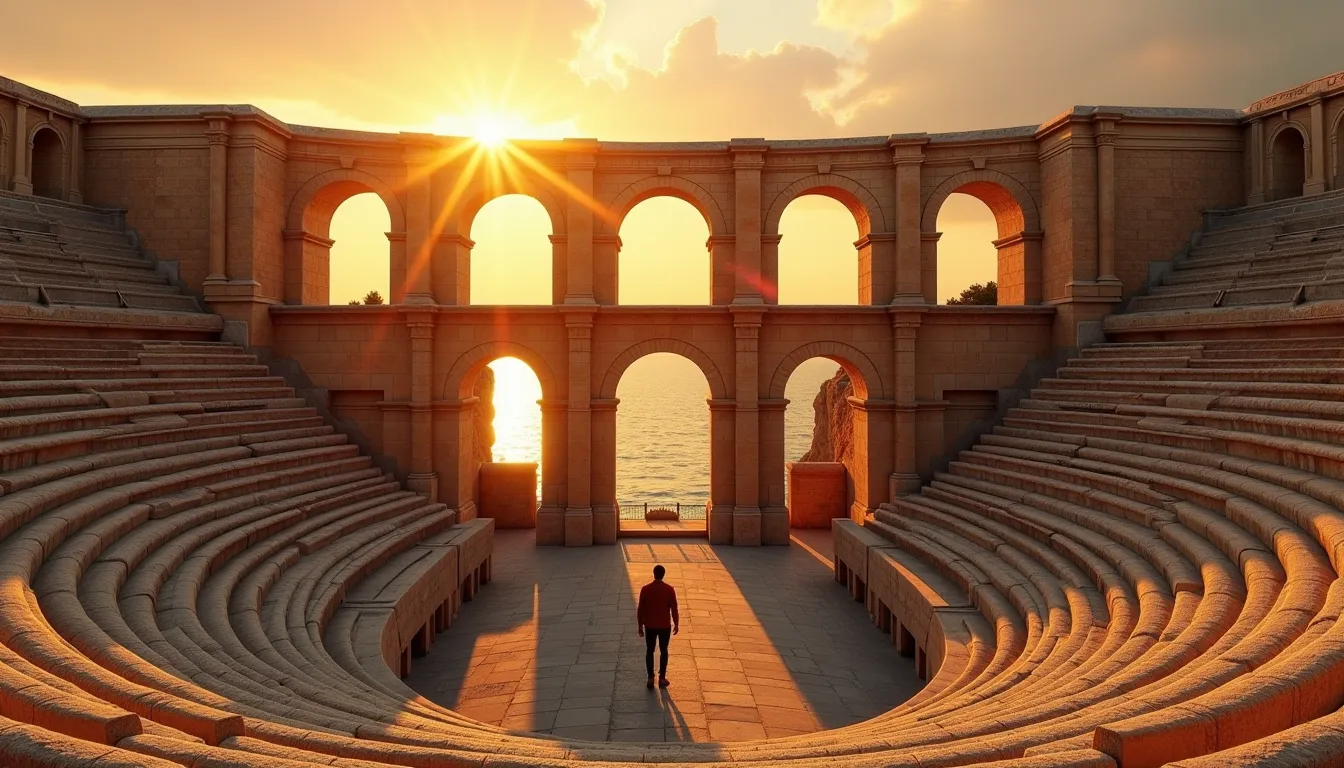Standing before Pula’s ancient Roman amphitheater, I was instantly transported back 2,000 years. The massive limestone arches glowed golden in the setting sun, while the Adriatic Sea sparkled just beyond. This wasn’t just another European ruin – this was one of the most spectacular ancient Roman structures still standing, hiding in plain sight on Croatia’s Istrian peninsula.
A colosseum that rivals Rome
Built between 27 BC and 68 AD, the Pula Arena is the sixth-largest surviving Roman amphitheater in the world and the only one with all four side towers completely preserved. Unlike Rome’s crowded Colosseum, here you can wander freely, touching stones that have witnessed millennia of history.
“Our amphitheater tells stories that span centuries,” explains Marko Jelenić, a local historian. “From gladiatorial combat to medieval knights to today’s film festivals and concerts – these walls have seen it all.”
Where gladiators once battled
Walking through the underground passages where gladiators and wild beasts once awaited their fate sends chills down my spine. The arena once held 23,000 spectators who gathered to watch bloody spectacles. Today, it hosts the Pula Film Festival and summer concerts under the stars – a much gentler use of this magnificent space.
The Adriatic’s hidden historical gem
While Croatia’s Dalmatian coast draws crowds to Dubrovnik and Split, Istria remains relatively undiscovered by American travelers. Much like Corsica’s hidden villages, Pula offers authentic experiences without overwhelming tourism.
A peninsula shaped by empires
Istria’s history reads like a European history textbook. Romans, Venetians, Austro-Hungarians, Italians, and Yugoslavs have all left their mark. The result is a fascinating cultural tapestry visible in Pula’s architecture, cuisine, and even the local dialect.
“In Istria, we don’t just preserve history – we live within it,” says Ana Kovačić, a local tour guide. “Our daily lives unfold amid ancient temples and medieval squares.”
Truffles, olive oil, and wine paradise
Istria’s culinary scene rivals Greece’s secret islands for Mediterranean excellence. The peninsula’s inland forests yield prized white truffles, while its hillsides produce award-winning olive oils and wines. Don’t miss fuži pasta with truffles or fresh seafood caught daily from the Adriatic.
Beyond the amphitheater
While the arena dominates Pula’s skyline, the city brims with other ancient wonders. The Temple of Augustus, the Arch of the Sergii, and an intricate Roman floor mosaic all testify to Pula’s importance in the ancient world.
Where to stay
Accommodations range from boutique hotels in converted Austro-Hungarian villas to seaside resorts. For the most authentic experience, consider staying in the old town where narrow stone streets lead to hidden piazzas and local restaurants.
Best time to visit
Unlike the adventure trails of the Andes or Australia’s hidden gorges, Pula is best experienced in the shoulder seasons. Visit in May-June or September-October for pleasant temperatures and fewer tourists.
“Summer brings energy to our city, but autumn reveals Pula’s true soul,” shares Marina Orlić, a local winemaker. “The light is softer, the crowds thinner, and you can truly hear the echoes of history.”
A safari of a different kind
While not offering the wildlife of Africa’s hidden sanctuaries, Pula provides a historical safari through time. From the Bronze Age to the digital age, few places pack so many eras into such a walkable space.
As dusk falls and the amphitheater lights illuminate those ancient arches, I understand why this place captivates visitors. Pula isn’t just a destination – it’s a time machine disguised as a coastal Croatian city, where history doesn’t just surround you; it embraces you like an old friend.
